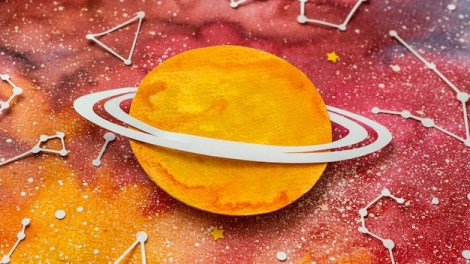Three Fascinating Facts About Jupiter

Jupiter is the largest planet in our solar system.
Jupiter is composed mostly of hydrogen and helium.
Jupiter has a powerful magnetic field.
Jupiter has at least 79 known moons.
The Great Red Spot on Jupiter is a massive storm that has been raging for centuries.
Jupiter’s gravity is 2.5 times stronger than Earth’s gravity.
Jupiter’s days are the shortest in the solar system, lasting just under 10 hours.
Jupiter’s distance from the Sun is about 484 million miles.
Jupiter is 11 times wider than Earth.
Jupiter has a faint ring system made up of dust particles.
Jupiter’s atmosphere is constantly changing, with huge swirling patterns and storms.
Jupiter has the strongest auroras in the solar system.
Jupiter’s core is thought to be composed of heavy elements like rock and metal.
Jupiter’s surface is covered in thick clouds of ammonia and water vapor.
Jupiter’s moons Io, Europa, Ganymede, and Callisto are known as the Galilean moons.
Jupiter’s moon Io is the most volcanically active object in the solar system.
Jupiter’s moon Europa is believed to have a subsurface ocean of liquid water.
Jupiter’s moon Ganymede is the largest moon in the solar system.
Jupiter’s moon Callisto is considered to be one of the most heavily cratered objects in the solar system.
Jupiter’s magnetic field generates intense radiation belts around the planet.
Three Fascinating Facts About Jupiter part 2
Jupiter was named after the Roman king of gods.
Jupiter is visible from Earth with the naked eye and is often one of the brightest objects in the night sky.
Jupiter’s iconic bands are formed by differences in the speed and direction of winds in its atmosphere.
Jupiter’s rotational axis is tilted just 3 degrees, resulting in minimal seasonal variations.
Jupiter’s massive size and strong gravity have a significant influence on the orbits of other objects in the solar system.
Jupiter’s magnetosphere extends millions of miles into space.
Jupiter is believed to have played a role in shaping the early solar system’s dynamics.
Jupiter’s gravity is so strong that it can cause tidal forces on its moons, affecting their geological activity.
Jupiter has been visited by several robotic spacecraft, including the Galileo probe.
Jupiter’s upper atmosphere is constantly bombarded by high-energy particles from the Sun, causing auroras.
Jupiter’s average temperature is around -145 degrees Celsius.
Jupiter has a faint but distinct faint ring system composed of small rocks and dust particles.
Jupiter’s massive size prevents it from becoming a star; it would need to be about 80 times more massive to ignite fusion in its core.
Jupiter is often referred to as a gas giant because it lacks a solid surface.
Jupiter has a gravitational pull strong enough to capture and retain comets and asteroids in its orbit.
Jupiter’s rapid rotation causes it to bulge at the equator and flatten at the poles.
Jupiter’s powerful magnetic field has a significant influence on the surrounding space environment.
Jupiter’s atmosphere is characterized by regular bands of clouds that circle the planet.
Jupiter’s Great Red Spot is large enough to engulf Earth multiple times over.
Jupiter’s rapid rotation and massive size cause it to emit more heat than it receives from the Sun.
Jupiter’s moon Io experiences intense volcanic activity due to tidal heating from the planet’s gravity.
Jupiter’s moon Europa is considered one of the most likely places in the solar system to find extraterrestrial life.
Jupiter’s moon Ganymede has its magnetic field, making it the only moon in the solar system with this feature.
Jupiter’s moon Callisto is thought to have a subsurface ocean of liquid water beneath its icy crust.
Jupiter’s immense gravitational pull has helped protect the inner solar system from potentially dangerous asteroids and comets.

